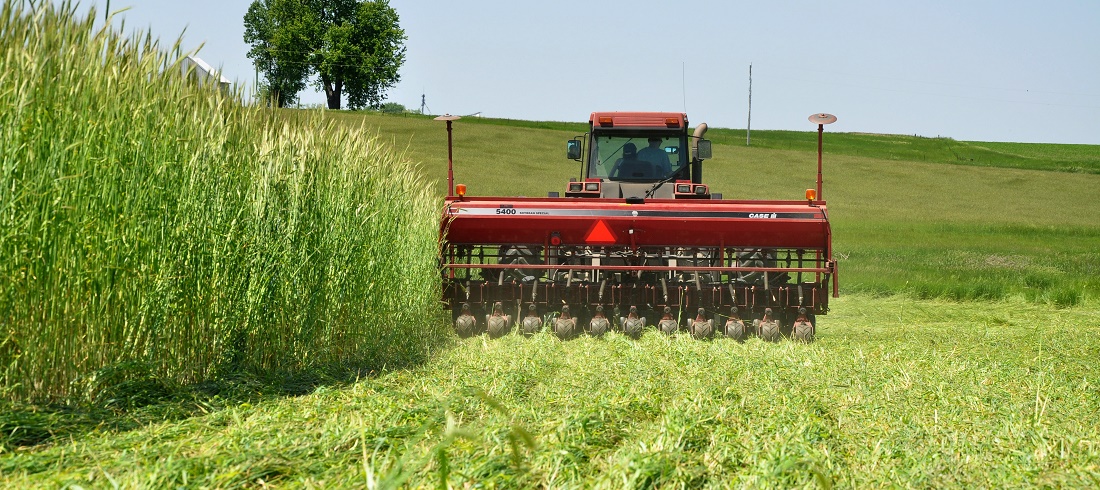
Crop expected to fall to 319.5 million tonnes
Sep, 21, 2023 Posted by Gabriel MalheirosWeek 202338
After last year’s record harvest, Brazil is expected to have a slightly smaller grain harvest in the 2023/24 season, which is in the initial planting phase, according to the first estimate of the National Supply Company (Conab) released on Tuesday. The forecast is for a production of 319.5 million tonnes, 1% less than the previous harvest of 322.752 million tonnes. The area is expected to increase by 0.5% to 78.9 million hectares.
The decrease in production reflects an estimated decrease in the corn crop, partially offset by an increase in the soybean crop. The rice crop is also expected to increase after 13 years of decline.
After the figures were released at the state-run company’s headquarters, Agriculture Minister Carlos Fávaro said the company “has the role of being conservative” in its first estimate for the next harvest. Minutes earlier, he had said that seeking a record harvest “is a stigma that must be broken.”
Conab President Edegar Pretto said the government continues to believe in a record harvest for the 2023/24 cycle. He said that forecasts point to a soybean surplus. He acknowledged that the weather is “always a concern,” but said that “we may be able to balance one region with another, and we will have a bumper crop.”The state-run company has forecast that Brazil will produce 162.4 million tonnes of soybeans in the 2023/24 harvest. If confirmed, this will be a new record and an increase of 5.1% compared to the 2022/23 crop.
Conab specialists expect a 2.8% increase in soybean area, to 45.29 million from 44.07 million hectares. The largest increase is expected in the Matopiba region (the confluence of Bahia, Maranhão, Piauí, and Tocantins states), where soybean growers are expected to plant 6.5% more. Most of the increase in area for the 2023/24 harvest will come from degraded pasture, the state-run company said.
Productivity is expected to rise 2.2% to 3.58 tonnes per hectare, with prospects of recovery in Rio Grande do Sul, which experienced its third year of severe drought last season.
In the report, Conab states that international demand for soybeans is expected to remain strong and its use in biofuel production will continue to grow. These factors tend to encourage producers to increase acreage.
Conab forecasts that soybean exports will reach 101.45 million tonnes, up 4.65% from the 96.9 million tonnes estimated for this year. Processing in the country is expected to increase by 3.89% to 54.86 million tonnes. The forecast is linked to the prospect of increased blending of biodiesel into diesel and exports of soybean oil.
Corn production in Brazil is expected to decrease by 9.1% compared to the 2022/23 harvest, considering the sum of the three harvests. Conab estimates a total production of 119.8 million tonnes in the 2023/24 cycle. According to the state-owned company, the area under cultivation is expected to be 4.8% lower in the new cycle, falling to 21.2 million hectares. Productivity is also expected to fall by 9.1% to 5,651 kilos/hectare.
Conab said that the current and projected prices of the grain “do not have an attractive profitability for the crop, which should reflect a reduction in corn area in Brazil in the 2023/24 harvest, especially for the first crop (-5.4%) and the second crop of the grain (-4.8%).”
With less availability, Brazil is also likely to export less. According to the state-run company, foreign sales are expected to fall by almost 27% to 38 million tonnes in 2023/24. On the other hand, domestic demand for grain is expected to increase by 6.4% to 84.6 million tonnes, with meat demand rising.
In the case of rice, production is forecast to increase by 10.2% to 11.3 million tonnes, after the country harvested its smallest crop in 20 years in 2022/23. The area will increase for the first time in 13 years, according to Mr. Pretto. The area is expected to reach 1.6 million hectares, 12.8% more than in 2022/23.
“The disincentive in recent crops came from the low productivity of rice with La Niña, which contributed to a less intense rainfall regime in Rio Grande do Sul and encouraged the expansion of soybeans in the traditional irrigated rice areas of the state,” Conab said in a report.
Beans area is also expected to increase by 1.9% to 2.7 million hectares in 2023/24, according to Conab. Despite this, production is expected to be 3 million tonnes, a decrease of 2.4% due to El Niño.
In the interview following the release of the estimates, Mr. Fávaro also acknowledged the challenge of ensuring that funds from the Crop Plan reach producers “at the right time.” According to him, some banks are already running out of funds for certain lines. He reported that he had spoken with the CEO of the Banco do Brasil, Tarciana Medeiros, who “has already asked for more funds” from Finance Minister Fernando Haddad.
Source: Valor Econômico
To read this article’s source material, please refer to: https://valorinternational.globo.com/agribusiness/news/2023/09/20/crop-expected-to-fall-to-3195-million-tonnes.ghtml
-
Other Cargo
Dec, 07, 2020
0
Customs offices worldwide prepare for Covid-19 vaccine distribution
-
Ports and Terminals
Jul, 28, 2022
0
Presidential decree includes Port of Santos in the National Privatization Program
-
Other Cargo
May, 09, 2019
0
Bolsonaro signs executive order easing gun imports
-
Trade Regulations
Aug, 29, 2019
0
Norwegian salmon producer threatens to suspend purchase of Brazilian soy



